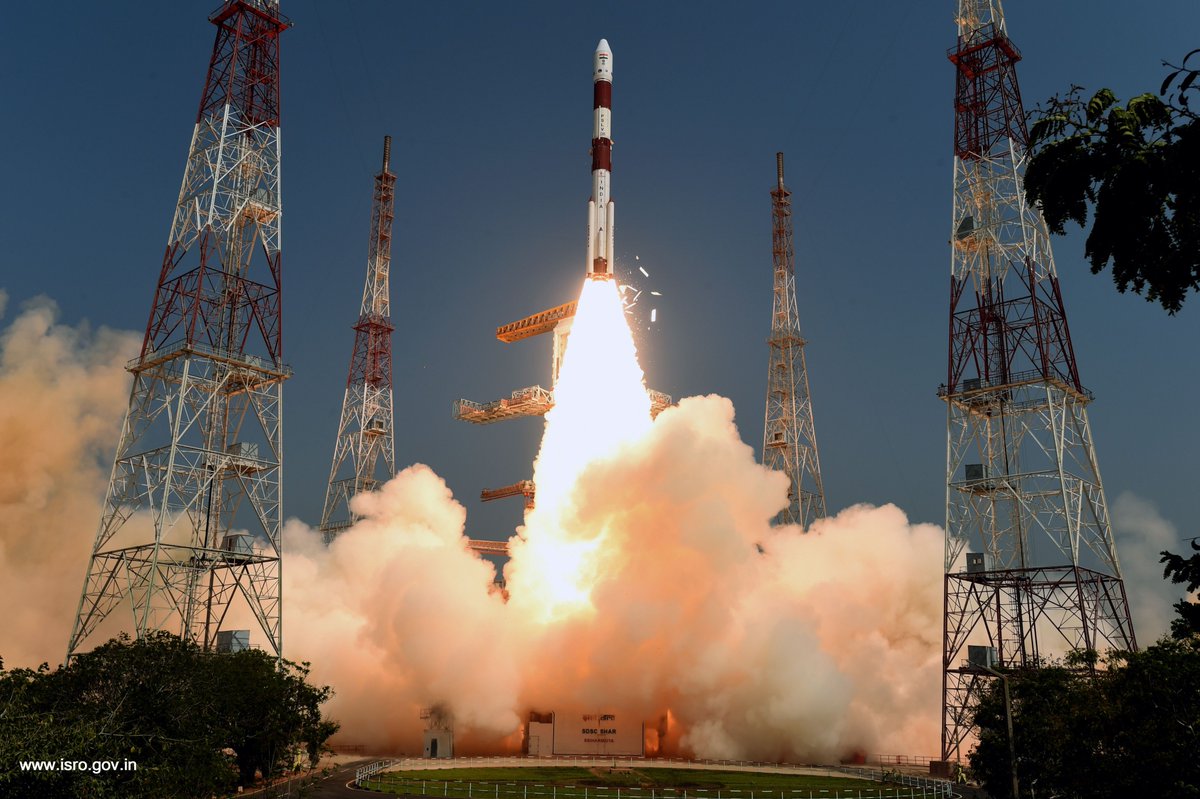
TIA SCIENCE DESK
India today launched latest satellite EMISAT and 28 other smaller satellites of international customers this morningwith textbook precision. TheIndian Space Research Organization, ISRO, the national space agency’s workhorse launch vehiclePSLV-C45, carrying the payloads on board, lifted off from its spaceport, SatishDhawan Space Centre, Sriharikotta at 09:27 am. In a little over 17 minutes, theprimary payload EMISAT has been ed by the rocket at an altitude of 754 km, as planned.
Inthe next one-and-a-half hours, after two rounds of engine “restart” to reducethe orbital height to 505 kilometers, the customer satellites were releasedinto space. After reaching the planned orbital height, all 28 customer payloadswere ed in space within five minutes.
Later,the remnant fourth stage of the rocket was allowed to fly further for 66minutes by undergoing two more rounds of engine restarts. It helped to bringthe engine to a height of 507 kilometers in a circular path. It is set to serveas an experimental platform in space, as it is fitted with research instrumentsfrom the ISRO, Indian Institute of Space Science and Technology and anotherIndian organization called Radio Amateur Satellite Corporation.
Intoday’s mission, the rocket PSLV C45 flew in a new configuration called “QL.”In this configuration, the rocket is fitted with four longer versions ofstrap-on motors that provide the vehicle the required additional thrust.Earlier, the rocket used to be in “XL” version with six strap-on motors or twoor with no strap-on motors known as core alone configuration.
EMISATis capable of gathering information of strategic value, in electromagneticspectrum. Its devices have been developed by Defence Research and DevelopmentOrganization, DRDO. The foreign satellites include 24 from the US, two fromLithuania and one each from Spain and Switzerland. 20 of the US payloads aremeant for earth observation, and are known as Flock-4A. Four other US payloadsknown as LEMUR are used for vessel automatic identification. Switzerland’sAstrocast-2 is involved in studies of the cutting edge Internet-of-Thingstechnology. Aistechsat-3 of Spain is useful for remote asset management andaircraft tracking. They have all been launched under an agreement with theAntrix Corporation, the commercial arm of ISRO. Currently, the rocket’s fourthand last stage engine is travelling with three devices attached to it to yetanother orbit where it will serve as an experimental platform. It is expectedto get stabilized in the new orbit by 12.27 noon.
AIRcorrespondent reports that the workhorse rocket PSLV has gone many steps aheadin terms of its reliability with today’s success. As all the new featuresassociated with this mission have been validated by the success, the launchvehicle has once again proved to be highly versatile. To make the most out ofthe mission, its fourth stage engine has been given a new lease of life.Normally it goes into oblivion as space debris, after launching all thesatellites. But ISRO is set to continue to use it by keeping it alive, carryinginstruments on it for academic research. Though the same technique has beenadopted on January 24 this year as well, there is something new this time. Intoday’s mission, the engine is wrapped with solar panels for the first time togive perennial power supply to the instruments. The innovations have once againopened a new leaf in the golden annals of ISRO.
Ina congratulatory address to his fellow scientists, ISRO Chairman Dr Sivan saidthere would be thirty more ISRO missions this year. The next mission online isthe launch of a RISAT-2B satellite by PSLV C46 by mid-May, followed by anothersatellite under the Cartosat-3 by using PSLV C47. Chandrayaan-2 mission wouldbe the next in line for launch. He also announced that a visitors gallery hasbeen thrown open for the public with today’s launch, which has been viewed byover 1200 people free of cost. In the next launch, 5000 people will be allowedto view from the gallery, which will gradually be increased to ten thousand.
DrSivan also said three high school students each from all states and unionterritories, numbering 108, would be permitted to undergo 15-days orientationprogramme in ISRO facilities from mid-May. It serves as a student outreachprogramme of the national space agency. He expressed hope, the move would helpstudents to develop an interest in space studies and reorient themselvestowards it.
TheISRO Chairman congratulated all scientists involved in the mission and also theindustry participants. He noted that 95 per cent of the works in this missionwere sourced from the private industry, including 60 per cent of thefabrication works.
